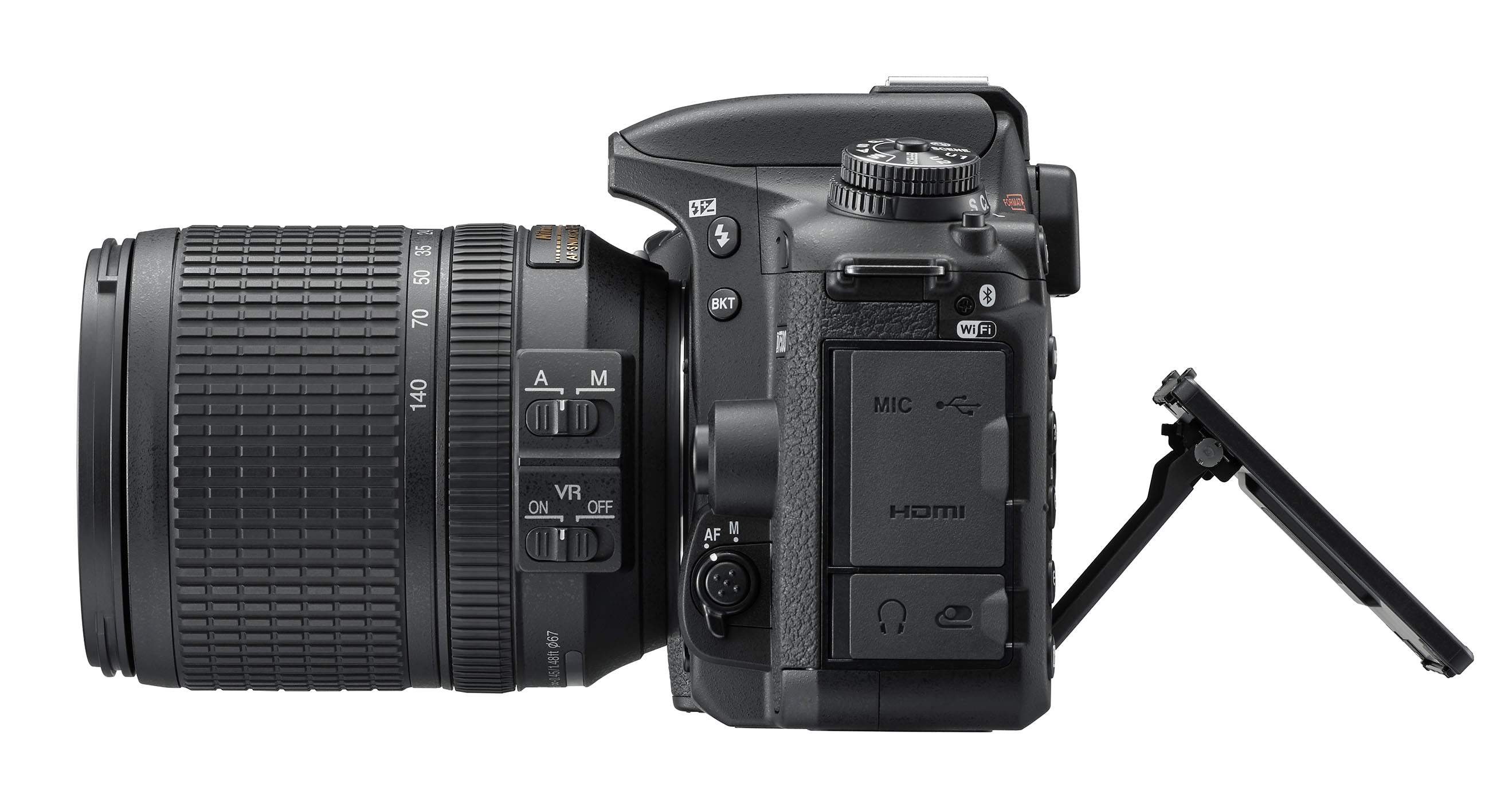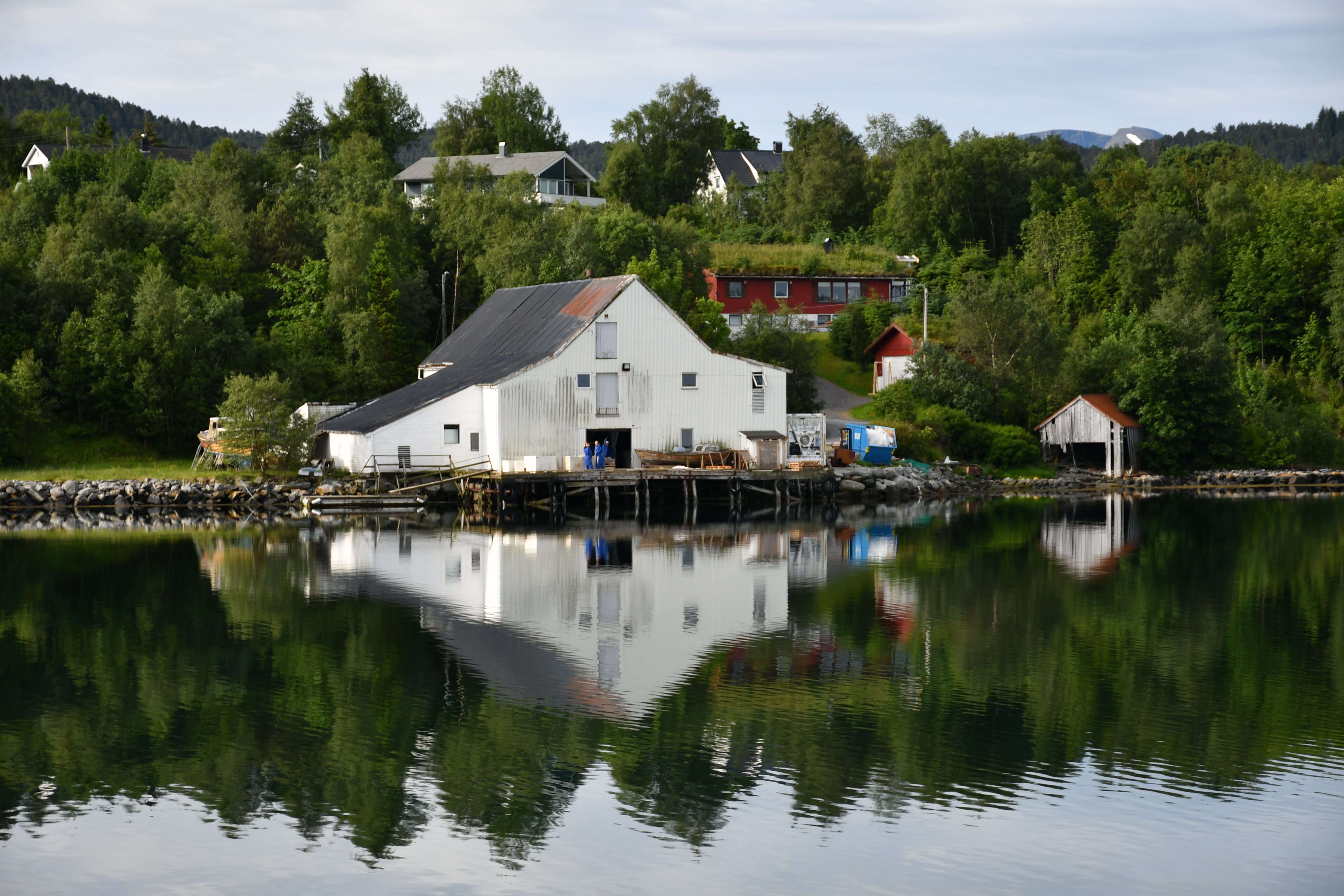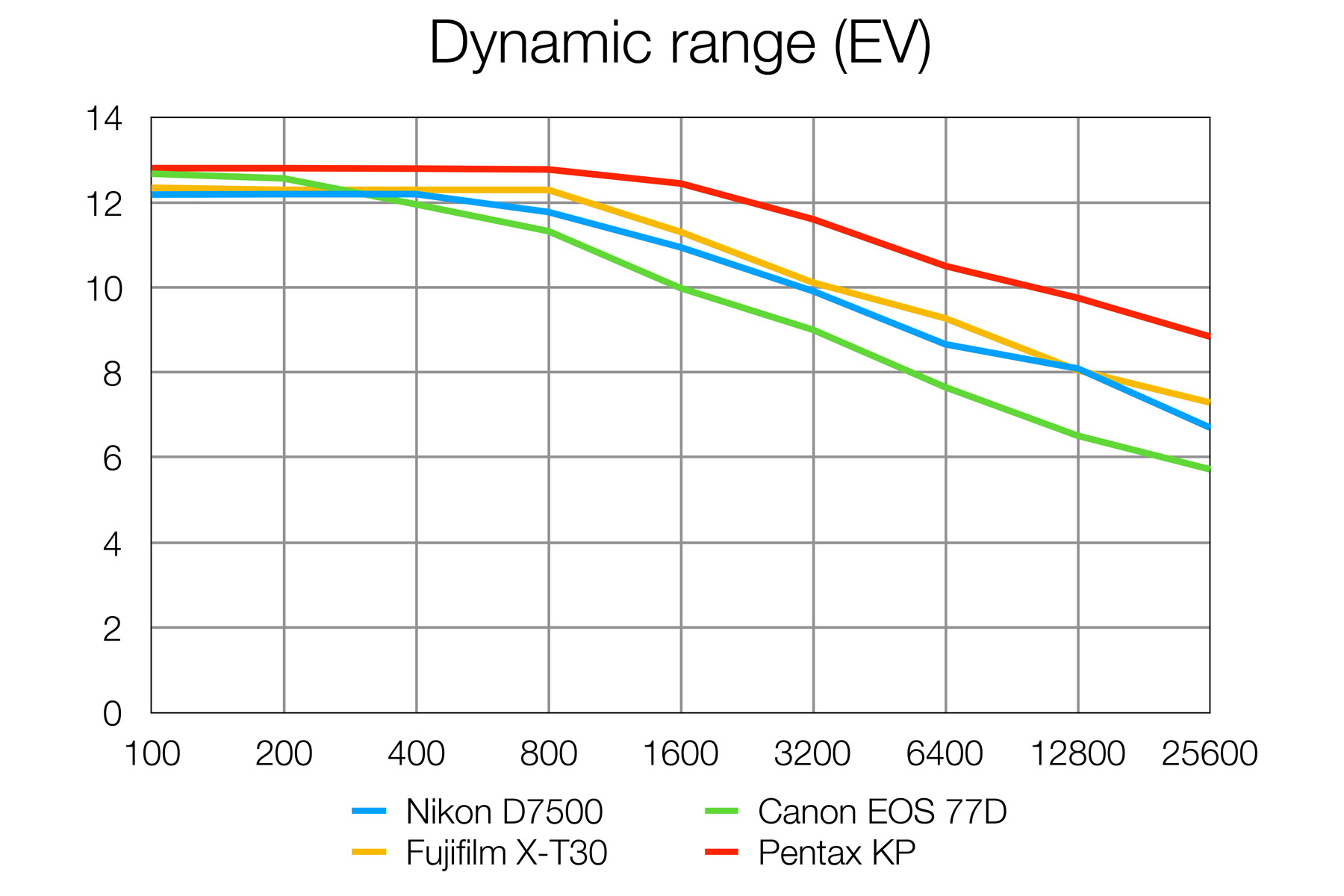Digital Camera World Verdict
Nikon's decision to drop the resolution of its top APS-C DSLRs to 20 megapixels was a surprise to many and this has a slight impact on the D7500’s outright resolution – but its speed, low-light performance and overall image quality are first rate. At first it looked like a bit of routine range-filling on Nikon's part, but as the market has matured, prices have fallen and rivals have changed... and the D7500 now has few direct competitors.
Pros
- +
Good high ISO performance
- +
4K video
- +
8fps continuous shooting
Cons
- -
Only one card slot
- -
No battery grip provision
- -
No real gains in image quality
Why you can trust Digital Camera World
The Nikon D7500 does not boast any dramatic new technologies, but it does fill a significant gap in the range. It fits in towards the top of the Nikon DX (APS-C format) digital SLR range, where it’s designed to offer a balance between high-end performance, versatile features and an affordable price.
The D7500 slots in above the D7200, now discontinued, and below the D500. The Nikon D500 is a powerful, professional-level camera that can shot continuously at 10 frames per second with a big buffer capacity and a maximum expanded ISO of 1,640,000, both made possible by the new 20.9MP sensor and the Expeed 5 processor – it's a more advanced professional camera that sounds similar to the D7500 but is actually in a different league – and a different price range.
Update: As of 2021, the Nikon D7500 is perhaps the last DX format Nikon DSLR we'll see. At the time of its launch it looked like the start of a new generation of fast and versatile DSLRs, but with hindsight it looks like the end of an old generation instead. Let's hope we're wrong!
• See also: Nikon Z50 vs D7500
Putting aside the four-megapixel drop in resolution, which is unlikely to prove very significant in everyday shooting, the D500 raised the bar for Nikon’s DX-format cameras. It also raised the price point.
This left a big gap between the D7200 and D500, which the D7500 has now filled; so the question is how much of the D500’s DNA has filtered down into the D7500, and whether this is the camera that could give enthusiasts the perfect balance between power and value?
Specifications
Sensor: 20.9MP APS-C CMOS (23.5 x 15.7mm)
Focal length conversion on lens: 1.5x
Memory: SD/SDHC/SDXC (UHS-I)
Viewfinder: Optical pentaprism, 100% coverage
Max video resolution: 4K UHD 3,840 x 2,160
ISO range: 100-51,200, expandable to 50-1,640,000
Autofocus: 51-point phase-detection AF, 15 cross-type
Max burst rate: 8fps
Screen: Tilting 3.2-inch touchscreen, 922k dots
Shutter speeds: 30-1/8,000 sec, Bulb
Weight: 720g (body only, with battery and memory card)
Dimensions: 136 x 104 x 73mm
Power supply: EN-EL15a lithium-ion battery (supplied)
The best camera deals, reviews, product advice, and unmissable photography news, direct to your inbox!
Key features
This isn’t a cheap DSLR, even now, but the specs are very tempting. They start with the continuous shooting speed of 8fps, which is a little short of the 10fps and more achieved by top APS-C DSLRs and mirrorless cameras, but still enough for capturing most high-speed action.
The D7500 is helped by an unusually good buffer capacity of 50 raw (NEF) files – unusual outside the professional market. The typical enthusiast DSLR or mirrorless camera can shoot any number of JPEGs, but most keen photographers would rather shoot raw, even in continuous mode, so the D7500 is well ahead of its direct rivals here.
It also has the amazing high ISO setting of the more expensive D500, topping out at ISO 1,640,000. That’s 5EV above its maximum 'standard' ISO value of 51,200, so the quality inevitably takes a nosedive, but it is an indication of the technological advances built into the D7500.
The D7500 is great for video, too, offering 4K UHD capture. This is increasingly common in the mirrorless market, but it’s the first time 4K video has appeared in a non-professional DSLR.
Nikon hasn’t used its latest 153-point autofocus system, however. This remains the province of its more expensive D500. Instead, the D7500 gets an improved version of Nikon’s long-running 51-point Multi-Cam 3500 II autofocus sensor, now with the Group Area AF mode found in Nikon’s professional models and an Auto AF Fine Tune feature.
It doesn't have on-sensor phase detect autofocus either, so while you can use its live view mode for 4K video, it relies on slower contrast-detect autofocus.
1. Surprisingly, the D7500 does not accept a battery grip.
2. The touchscreen tilts up and down and has a resolution of 922k dots, slightly down on some current rivals.
3. There’s only one SD card slot, which is a bit of a surprise given that the cameras on either side in the Nikon range have two.
4. The D7500 uses Nikon’s ‘enthusiast’ control layout, with a combined mode dial and drive mode dial.
On the outside, the D7500 sports a carbon-fibre body rather than metal alloy, though it feels plenty sturdy enough nonetheless and it is weather-sealed. It has a tilting touchscreen display on the rear, and it’s the first Nikon DSLR with built-in support for Nikon’s new radio-controlled Advanced Creative Lighting System.
But there are a couple of unpleasant little surprises. The first is that there is only one memory card slot. You might get by perfectly well with one slot, but the fact is that the older D7200 and the higher-end D500 both have two.
Worse, there is no provision for a battery grip. The battery life is good already and it’s no hardship to carry a spare or two in your pockets, but a grip can also improve the handling with long lenses and, even more importantly, make the camera easier to use vertically for long portrait shoots. Both of these omissions are a bit of a surprise.
Build and handling
After a long diet of mirrorless cameras in the testing labs, the D7500’s chunky, weighty body is a welcome change. It’s not as large as a pro DSLR, but it’s a big step up from entry-level DSLRs like the Nikon D3500 or the Canon EOS 800D. A deep grip on the front gives you a good, firm hold on the camera; round the back, the extra height in the body leaves enough room around the big, tilting screen for the buttons.
You pull out the bottom of the screen to adjust the angle, and an extending hinge moves it further away from the body so that it’s not partially obscured by the viewfinder eyecup. It also tilts downwards slightly for overhead shots. The Live View button is on the back of the camera at the base, inside a lever to switch between stills and video.
The D7500 doesn’t have a hybrid AF system like Canon’s DSLRs, so in Live View mode it relies solely on contrast autofocus, which is precise, but slower. Even so, the D7500’s Live View autofocus feels a little quicker than previous models – Nikon suggests this could be due to the more powerful Expeed 5 processor.
The D7500’s optical viewfinder is very good. It uses a proper pentaprism design rather than a cheaper ‘pentamirror’, and offers 100% coverage. There is an assumption that optical viewfinders are intrinsically inferior to electronic viewfinders because they don’t show the digital image as the sensor will capture it. There is a counter-argument, however. With a DSLR, you can move your eye from the real world to the viewfinder and see exactly the same naked-eye, optical view. You don’t get the discontinuity of an electronic viewfinder, and you can still check the image immediately after you’ve shot it on the rear screen.
The control layout is much the same as the old D7200. On the left of the top plate is a mode dial on top of a release mode dial. You need a little dexterity in your digits to press down the locking button for the release mode dial, but at least this stops you from changing the setting accidentally.
The focus mode control is a lever on the front of the camera on the left side of the lens flange. You use the lever to switch between manual focus and autofocus, and hold down a button in the centre to change the autofocus mode and focus area using the front and rear command dials. If you’re not used to Nikon DSLRs, you might find this arrangement a little odd, but if you are then it makes sense – you can hold in the button with your left thumb and change the focus settings with your right forefinger and thumb.
Having an LCD panel on the top of the camera is useful for making settings changes like these, although they’re also displayed on the rear screen. This is useful if you’re shooting in dark conditions or with the camera on a tripod.
1. Dynamic range
Always a strong point with Nikon DSLRs, the D7500’s dynamic range is very good, even in JPEG files.
2. Colour rendition
The D7500 produces rich, natural-looking colours and the auto white balance works well.
3. Fine detail
Nikon has boldly opted for a slight drop down to 20.9 megapixels, but fine detail remains very crisp.
If you’re not used to Nikon DSLRs, it might seem as if there’s no particular logic to the button placements, so it could be a while before you can change settings fluently and instinctively. If you’ve used a D7000-series model before, though, you won’t have any trouble.
The same goes for the menu system – especially the custom settings options. Higher-end Nikons like this one can be customised to an enormous degree, but you’ll need to spend some time with the manual to take full advantage. You can use the D7500 and most of its advanced features without customising a thing, of course, so it’s not compulsory.
Overall, the D7500 has a great ‘feel’. It might not have the same alloy construction as the more expensive D500, but it nevertheless feels reassuringly solid and ‘grippable’, helped by its rounded corners and the high-quality materials used on its surfaces.
We tested it with the Nikon 18-140mm lens. This is likely to be the standard kit lens for the D7500, though it’s also available body-only and some retailers may put together their own camera-lens combinations.
It’s a good pairing. The 18-140mm offers a sizeable zoom range over the average kit lens, yet it’s not too heavy and its optical performance is good – especially if you switch on the in-camera lens corrections. (which work only with JPEGs – raw files will still need correcting).
Like other recent Nikon DSLRs, the D7500 comes with Nikon’s SnapBridge wireless picture transfer and remote control system. This uses a Bluetooth LE always-on connection to automatically transfer 2MP versions of your photos to your smart device, via Nikon’s free SnapBridge app. The idea is that this Bluetooth connection can also activate the Wi-Fi connection when required for remote camera control and full-size image transfer. If you’re using an iOS device like an iPhone or an iPad, however, you will still need to authorise the Wi-Fi connection manually. This is a security measure built into Apple’s operating system, and there doesn’t seem to be any immediate workaround.
This means that setting up a Wi-Fi connection still involves a tedious bit of button-tapping, but the automatic image transfer is very useful for social media sharing. Images don’t always appear on your smart device straight away, but the fact you don’t need to do anything is a major boon.
Performance
The two main selling points for Nikon’s newest sensor and processing technology are speed and sensitivity, and the D7500 has plenty of both. The 8fps continuous shooting speed may not be quite up there with the 10fps Nikon D500 or Canon’s EOS 7D II, but it’s fast enough for most of us and, more importantly, it has the buffer capacity to cope with extended raw shooting. That’s useful not just for burst shooting, but for auto-exposure bracketing for HDR, for example, where you want to be able to rattle off bursts of three or five raw files.
Nikon’s Matrix metering produces pretty reliable exposures across a range of conditions and it’s easy enough to apply a little exposure compensation for tricky subjects. The D7500’s new Highlight-weighted metering mode is especially interesting, however. This adjusts the exposure so that the brightest parts of the scene are recorded without clipping. This can leave the midtones and the shadows quite dark, but if you’re shooting raw files it’s usually possible to recover darker areas very effectively. This looks like being a really useful feature.
The auto white balance system does an equally good job. It preserves the natural colour of outdoor shots very effectively and copes well under artificial light – though it will still show a bit of a yellow cast under tungsten lighting. Overall, colours are rich, vibrant and realistic. We used the D7500’s Standard picture control throughout, but other picture controls are available including Vivid, Portrait and Landscape.
The fine detail rendition is good, but it did lag very slightly behind the results from the D7200. It’s likely that you’d only notice this in direct side-by-side comparisons, however, and the D7500’s sensor has many other qualities to commend it.
Its ISO 1,640,000 maximum is spectacular but the cost in image quality is such that you might never use it. However, this high-ISO capability has a knock-on effect lower down the ISO range, and we wouldn’t hesitate to use the D7500 anywhere within its standard ISO range. At ISO 51,200, there is some obvious detail loss and some smoothing in fine textures, but the overall contrast, colour saturation and impression of clarity is excellent.
Lab tests
Given recent changes in the DSLR market and price drops on the Nikon D7500, there aren't too many direct rivals at this price. In the Canon camp, the EOS 77D is the closest rival (the new Canon EOS 90D costs way more than the D7500), and let's not forget that there's a third DSLR maker besides Canon and Nikon – and the Pentax KP is a close rival on price. Finally, we shouldn't forget that many photographers will be looking at mirrorless cameras too, so we've included the Fujifilm X-T30 in our lab test comparisons as a similarly-priced mirrorless model aimed at enthusiasts.
The Nikon D7500's relatively low resolution does hurt it slightly in our lab tests, where it's knocked back into fourth place by the other three cameras, but its sensor does not have an anti-aliasing filter, so the gap is quite small in the lab and even smaller in real-world shooting, where you have to look quite closely to see the differences.
The Fujifilm X-T30 is a clear winner for noise control in our lab tests, with the Nikon D7500 a surprising fourth. We say surprising because fewer megapixels generally mean less noise. However, noise is only part of the overall picture, and in real-world shooting, the D7500's ability to render fine, textural detail at high ISO settings without smudging it is noticeable.
Interestingly, it's the Pentax KP that wins out here, with the Nikon D7500 and Fujifilm X-T30 in second place. It's worth drawing attention to the Pentax KP's overall performance in our lab tests. It's not a major brand any more and the lens support may be a bit patchy, but Pentax still makes some very good cameras.
Verdict
Nikon's drop from its old 24-megapixel sensors to new 20 megapixel versions will have surprised many and still looks a little odd today. This does have a slight impact on the D7500’s outright resolution, though its speed, low-light performance and overall image quality are first rate. When it was first launched it looked like a bit of routine range-filling on Nikon’s part between the D7200 and D500, but as rival DSLRs have disappeared and the D7500's own price has fallen, it now finds itself in a very strong position in the enthusiast DSLR market. You can't get an APS-C DSLR convincingly better than this one without paying a lot more money.
Read more:
• Nikon D750 vs D7500
• These are the best DSLRs to buy today
• We pick the best Nikon cameras right now
• Ditching your DSLR? These are the best mirrorless camera alternatives

Rod is an independent photography journalist and editor, and a long-standing Digital Camera World contributor, having previously worked as DCW's Group Reviews editor. Before that he has been technique editor on N-Photo, Head of Testing for the photography division and Camera Channel editor on TechRadar, as well as contributing to many other publications. He has been writing about photography technique, photo editing and digital cameras since they first appeared, and before that began his career writing about film photography. He has used and reviewed practically every interchangeable lens camera launched in the past 20 years, from entry-level DSLRs to medium format cameras, together with lenses, tripods, gimbals, light meters, camera bags and more. Rod has his own camera gear blog at fotovolo.com but also writes about photo-editing applications and techniques at lifeafterphotoshop.com












